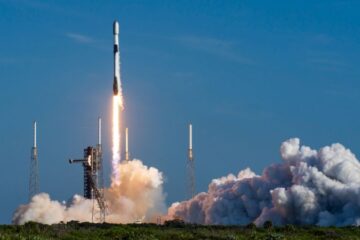In December, ISRO is getting ready for two significant missions. The European Space Agency’s (ESA) Proba-3 mission will be launched on December 4th, and SPADEX will follow to accomplish the in-orbit docking of multiple spacecraft.
The Proba-3 Mission
Two spacecraft are part of the Proba-3 project, which stands for PRoject for On-Board Autonomy. To learn more about the Sun’s corona, or outer atmosphere, they will collaborate to produce man-made solar eclipses. It will investigate the causes of phenomena like the coronal mass ejections (CME), which are the expulsion of charged solar particles, and unravel puzzles like why it is hotter than the solar surface.
The two probes will be placed in orbit around the Earth in a 600 x 60,530 km circle. The occulter is the first spacecraft that will obstruct the Sun, and the coronagraph is the second that will take images of the Sun’s corona. ESA states that the probes will be positioned in alignment with a 150-meter separation between them. Additionally, the mission will be beneficial in a number of ways.
“Proba-3 will be a laboratory in space to validate strategies, guidance, navigation and control and other algorithms, such as relative GPS navigation, previously tried in ground simulators,” the European Space Agency explained.
ISRO’s PSLV rocket is preparing the twin spacecraft for launch from the Satish Dhawan Space Centre in Sriharikota.
The SPADEX mission
The Space Docking Experiment, or SPADEX, mission is designed to show that ISRO can bring two satellites together in orbit.
According to ISRO, the mission includes a ‘Chaser’ that will chase a second satellite dubbed the ‘Target.’
“Subsequent to docking, the Chaser and Target will be separated so that they would carry-out their designated experiments with payloads,” added ISRO. Additionally, one spacecraft will use the Attitude Control System to manoeuvre the other while docked as part of the experiment.
Once validated, this technology will be employed in the sample collecting mission Chandrayaan-4. In order to return to Earth, the sample module will need to dock with another spacecraft in the Moon’s orbit.
Segments of the Indian Space Station, whose first module is scheduled for launch in 2028, will also be docked using it.


